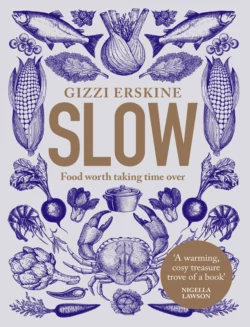Slow: Food Worth Taking Time Over

Gizzi Erskine
Тип: электронная книга
Жанр: Хобби, увлечения
Язык: на английском языке
Стоимость: 2016.88 ₽
Статус: В продаже
Издательство: HarperCollins
Дата публикации: 16.04.2024
Отзывы: Пока нет Добавить отзыв
О книге: ‘A warming cosy treasure trove of a book’ Nigella Lawson‘A sumptuous volume of recipes that urges you to linger in the kitchen.’ The TelegraphFood worth taking time overIn a world where we have less and less time, Gizzi Erskine breathes new life into the idea of ‘slow’.Embrace technique, understand the stories behind your ingredients and learn to savour the art of cooking again. The result of a life-long affair with food, Slow shows you how to braise, bake, poach and roast to truly make the most of every flavour.From nourishing stews, melt-in-the-mouth roasts and indulgent puddings, to simple guides to making your own pasta, noodles, dumplings and pastry, each one of over 100 delicious recipes tells the story of Gizzi’s passion for food that’s worth waiting for.